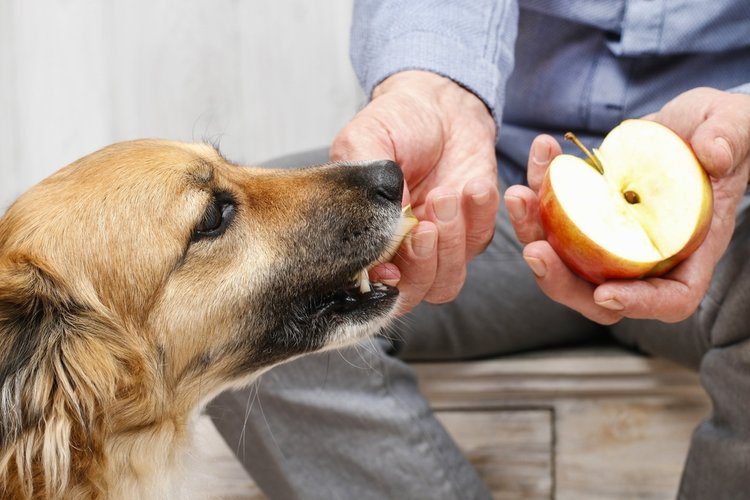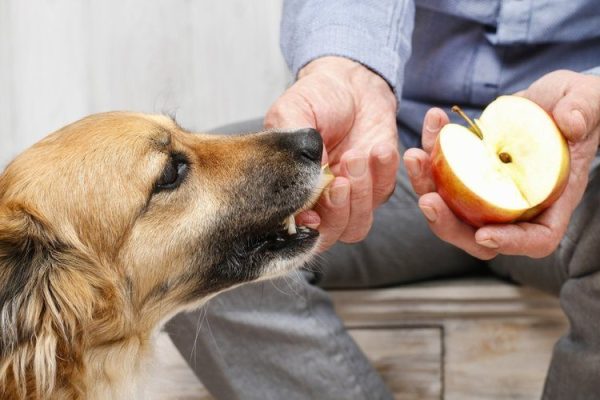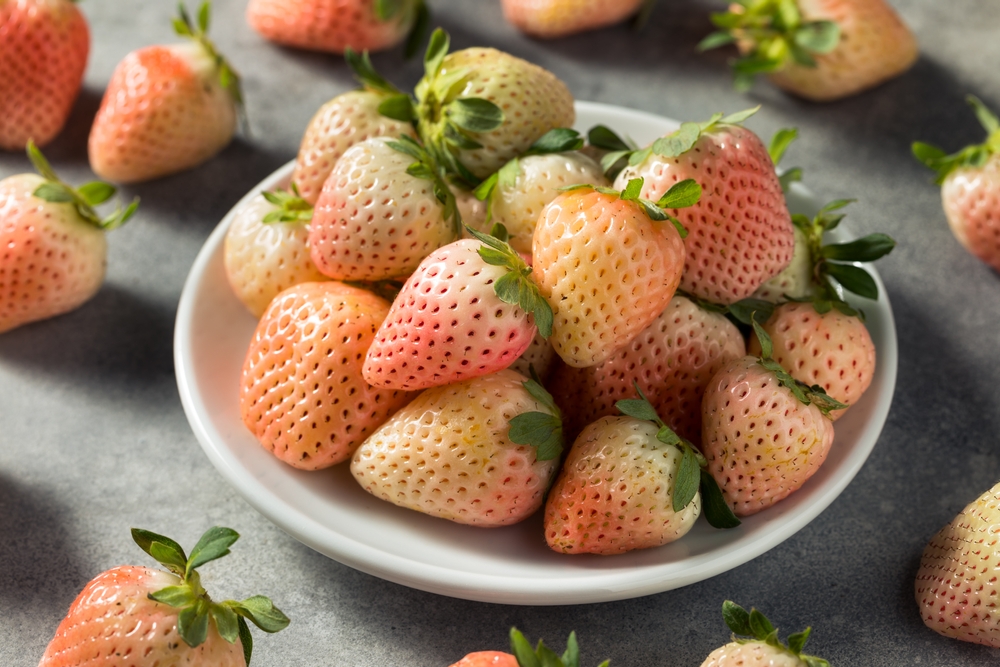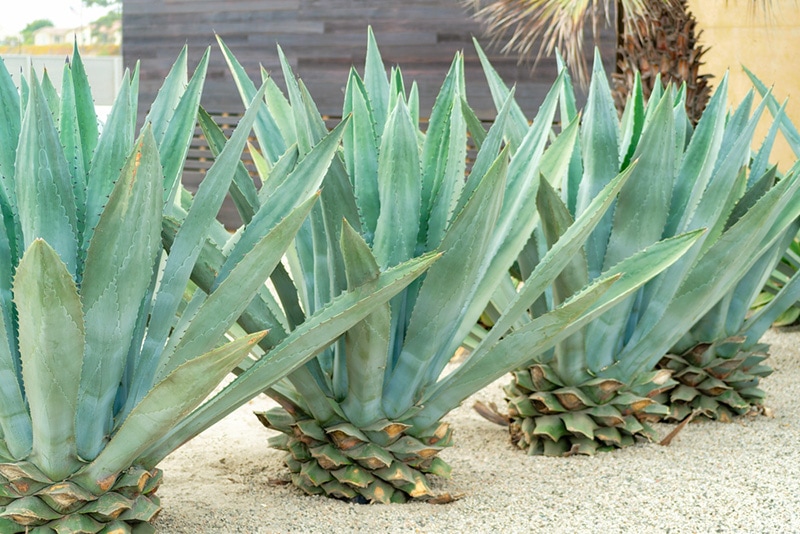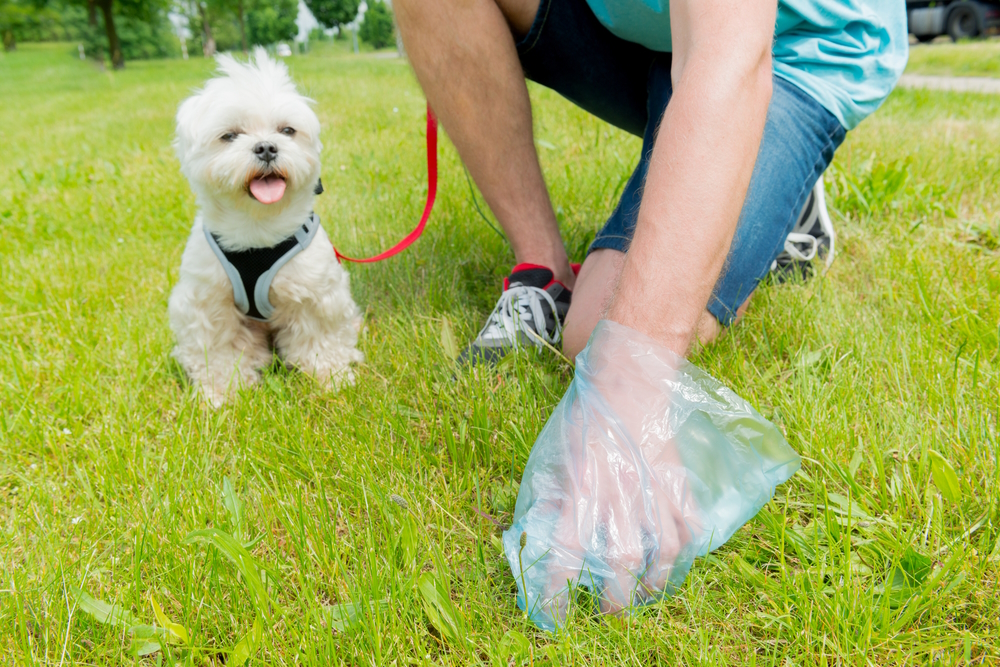If your dog has hypokalemia or a low concentration of potassium in the bloodstream, your veterinarian may have recommended that you supplement your dog’s regular meals with high-potassium treats. Potassium is vital to the function of the muscles, nerves, and heart, and it is crucial to keep your dog’s potassium at a healthy, steady level.
Whether you want to change your dog’s kibble diet to include high-potassium foods or give these foods to him as supplements, you will need to know which canine-safe foods provide an excellent source of potassium. In this article, we will look at 10 great food sources of potassium for dogs, so keep reading below to figure out which foods you’ll want to pick up at your next grocery store visit.
The 10 Foods With Potassium for Dogs
1. Sweet Potato
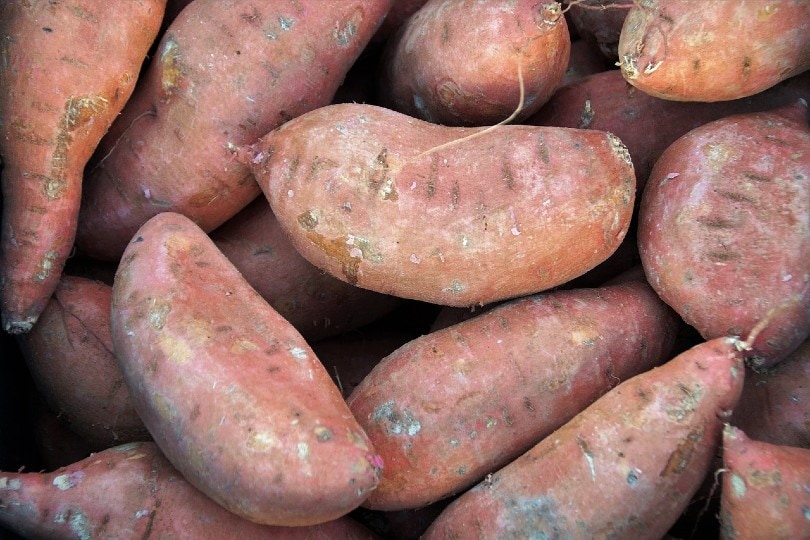
| How to Prepare: | Cooked and skinned |
Sweet potatoes are included in many canine food formulas and for a good reason! These root vegetables are not only a great source of potassium, but they are also packed with dietary fiber to support the healthy function of your dog’s digestive tract.
Another benefit to the sweet potato is that it is low in fat and high in vitamin content. Sweet potatoes contain plenty of vitamin A, which is essential for sustaining the eyes, muscles, nerves, and skin. Vitamin C is also abundant in sweet potatoes, which is key to supporting your dog’s immune system.
2. Salmon
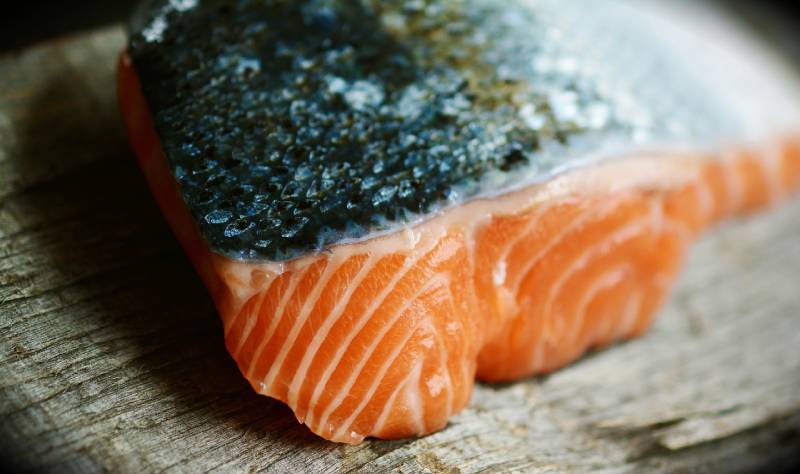
| How to Prepare: | Cooked, boneless, and seasonless |
If your dog is allergic to more common forms of protein (such as chicken or beef), salmon may be the perfect choice for you. Salmon provides a great source of potassium for your dog as well as plenty of protein to keep him going. Often, higher-quality kibble will be made with salmon, so you may get the opportunity to switch out your dog’s current diet for a healthier one.
Another way that salmon supports your dog is through omega-3 fatty acids. Omega-3 fatty acids help reduce inflammation, boost the immune system, and nourish the skin and coat.
3. Banana
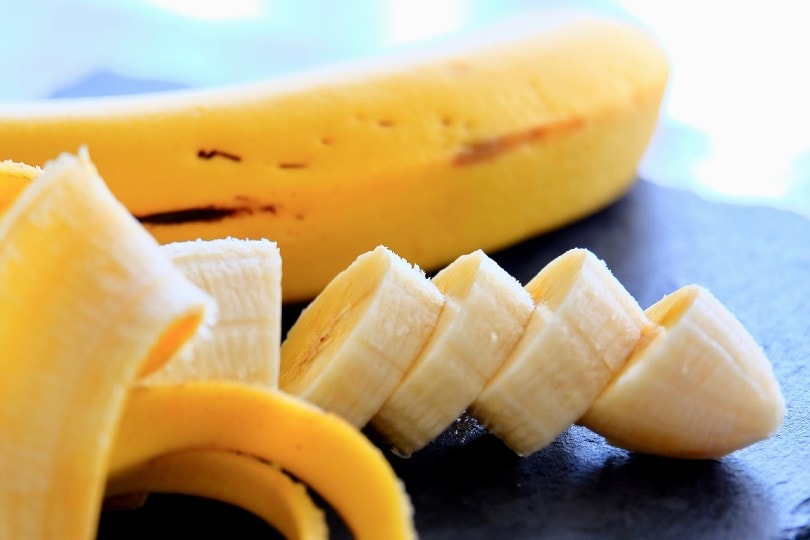
| How to Prepare: | Peeled and served mashed or sliced |
Bananas are a great source of potassium, and they are easy to prepare or mix into your dog’s treats. They also contain vitamin C and B6, making this fruit a great alternative to fatty or salty dog treats. Bananas are also full of fiber, giving your dog a boost to his gastrointestinal health, and magnesium supports your dog’s growth and absorption of nutrients.
However, bananas contain high amounts of sugar. If fed in moderation, they shouldn’t cause problems for your dog. But if your dog is fed too many bananas, he may experience some gastrointestinal issues.
4. Clams
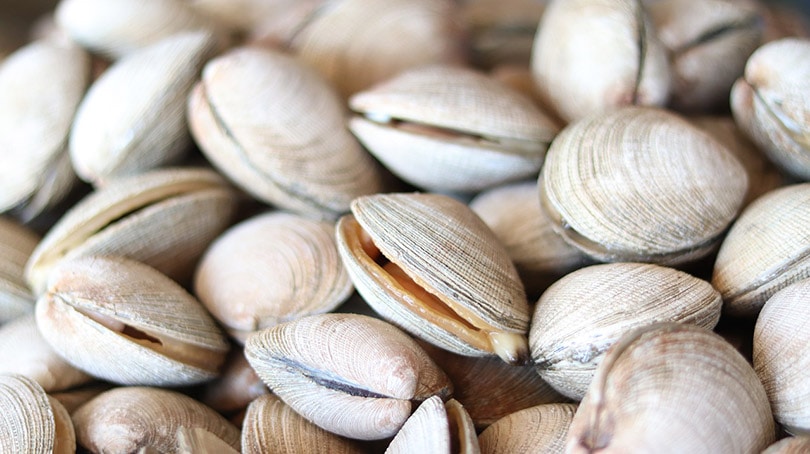
| How to Prepare: | Cooked and shelled |
Not only can clams give your dog a boost of much-needed potassium, but they can also provide plenty of protein and omega-3 fatty acids. There are several essential minerals in clams as well, including zinc, magnesium, and iron. Clams may support the health of your dog’s joints, boost his energy levels, and increase his overall health. However, since clams need to be cooked and shelled before feeding them to your dog, the preparation can require extra effort on your part.
5. Spinach
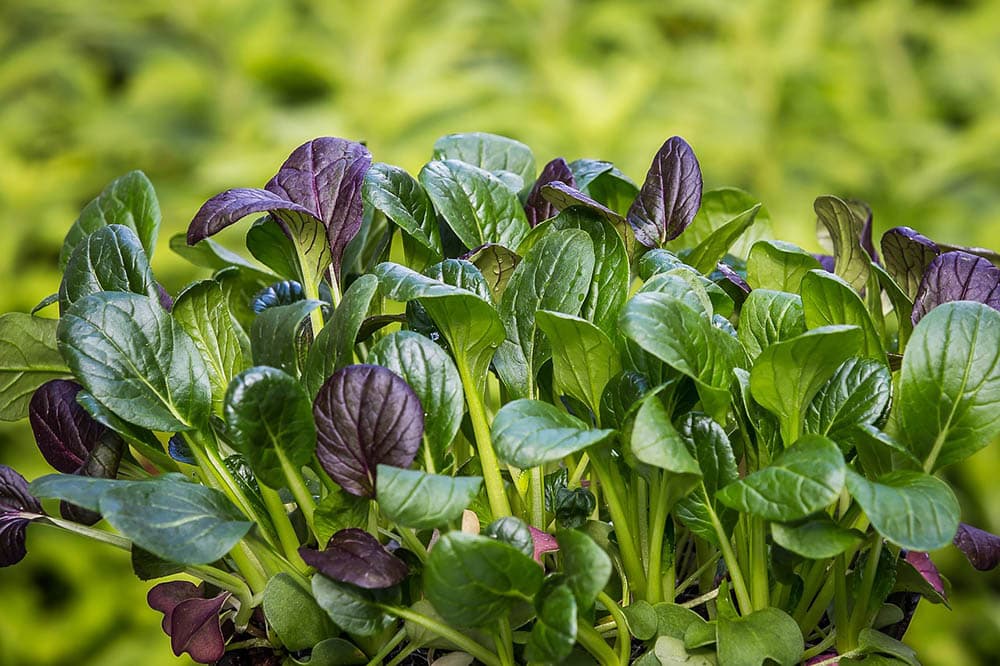
| How to Prepare: | Steamed and plain |
Spinach is high in potassium and provides plenty of other benefits, although some consider this leafy green vegetable a controversial dog food ingredient.
To start, we’ll list the benefits of spinach (other than being a great potassium source). Spinach is rich in vitamins A, B, C, and K. It is also high in iron, beta-carotene, and antioxidants. It contains roughage as well, which helps to stimulate your dog’s digestive tract.
On the downside, spinach is high in oxalic acid. If your dog’s oxalic acid levels are too high, this can prevent him from properly absorbing calcium. Over time, low calcium levels in the blood can lead to metabolic imbalances and other issues.
Before feeding spinach to your dog, consult your veterinarian to determine the best course of action.
6. Squash

| How to Prepare: | Steamed or roasted and plain, with seeds, skin, and rind removed |
Several squash varieties can significantly benefit your dog, especially as a quality source of potassium. Squash is packed with fiber, beta-carotene, and vitamin A. By eating squash, your dog will get a boost to his digestive health, his vision, and his overall cell function. Butternut squash, zucchini, and acorn squash all have their own unique benefits.
Dogs can eat squash by itself, or you can add it to their regular food. Squash can also be a healthier treat for overweight dogs, as it helps them feel fuller while giving them fewer calories.
7. Apples
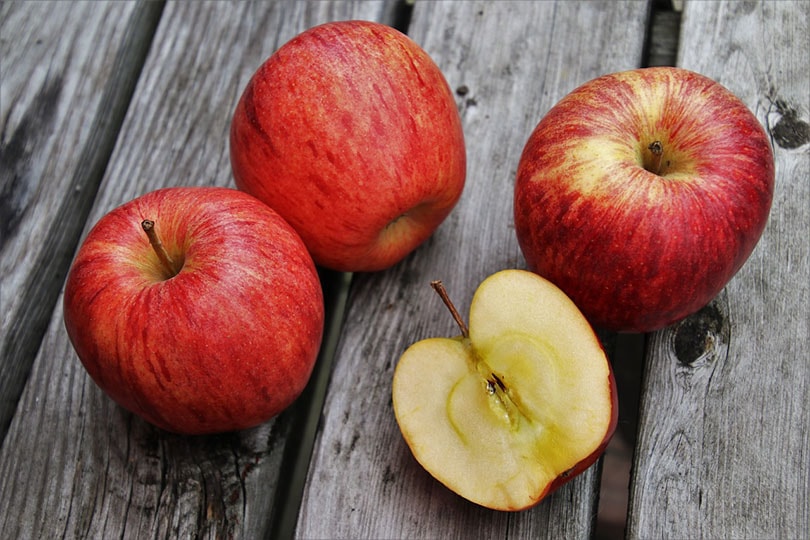
| How to Prepare: | Cut into chunks with the seeds and core removed |
Apples are an excellent and fun treat for any dog! They are a great source of potassium and vitamins A and C and are rich in fiber. Apples are not high in fat, so if you are looking for a non-fattening treat, this could be the perfect fit. Before feeding them to your dog, remove the core and seeds, as these are not good for your dog to consume.
8. Cucumbers
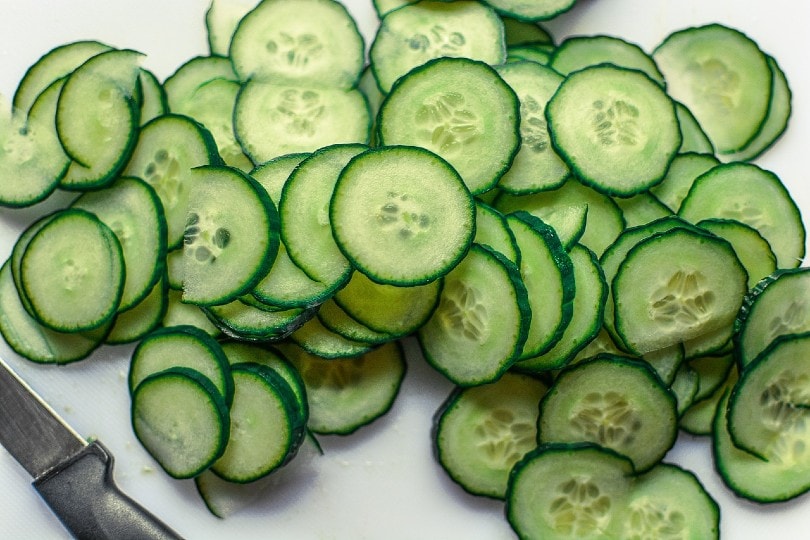
| How to Prepare: | Chopped into chunks |
Cucumbers are another healthy treat for dogs that need to lose weight. They are low in calories and offer a fun crunch that can tempt your dog. Plus, they are high in water content, so you can keep your dog extra hydrated during the hotter months.
Cucumbers should always be cut down into bite-sized chunks for your dog’s safety, and you should never feed him pickles. Pickles contain ingredients that are not healthy or safe for dogs, so it is best to stick with plain cucumbers.
9. Mango
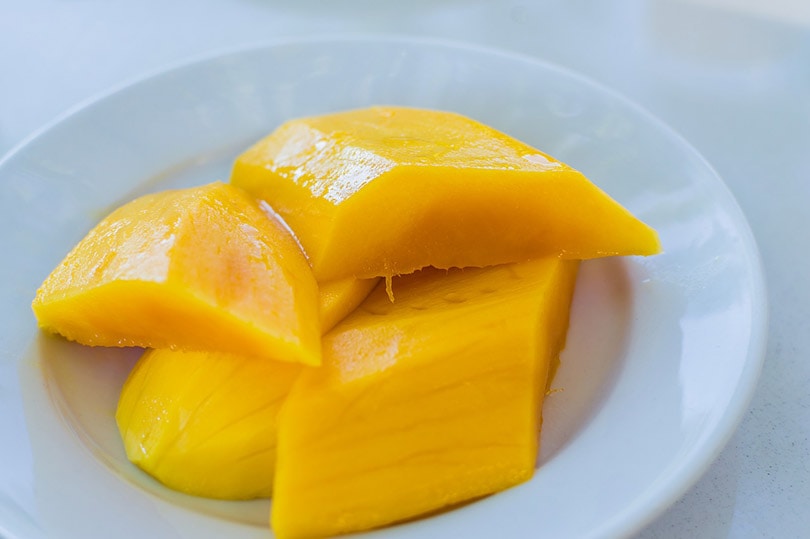
| How to Prepare: | Peeled with the pit removed and chopped into chunks |
Mango contains lots of potassium and fiber, making this fruit a great choice for dogs needing extra digestive support. It also is an excellent source of vitamin A, vitamin B6, vitamin C, and vitamin E. Preparing a mango for your dog to eat will take a little extra effort, as it is necessary that you peel it, remove the pit, and chop it into chunks for your dog’s safety. Since mango is high in sugar, you should only give this fruit to your dog in moderation.
10. Orange
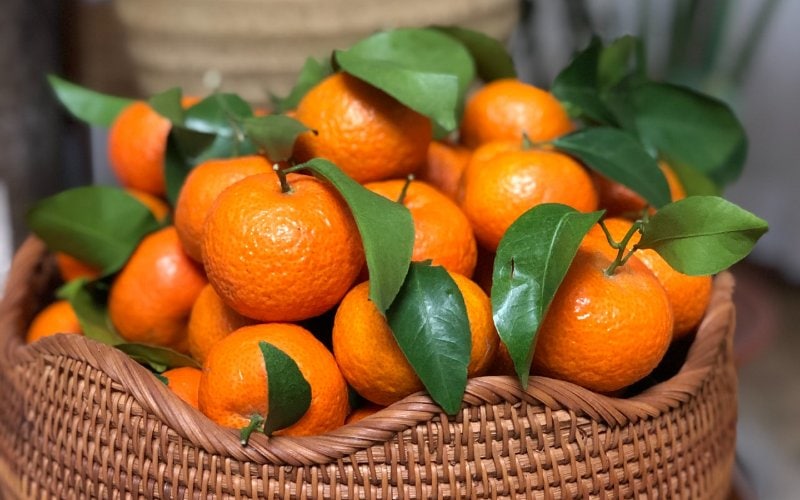
| How to Prepare: | peeled with the seeds removed and cut into chunks |
Although oranges are safe for dogs to eat, convincing your dog to eat them may be difficult. Many dogs are deterred by the strong, citrusy scent of oranges, but if your dog isn’t, you may have no issues adding it to his meals occasionally. There is plenty of potassium in oranges, just as there is plenty of vitamin C and fiber. However, oranges should only be fed to dogs in small quantities because they can be high in sugar.
- See Also: Can Dogs Eat Kumquats?
Signs of Low Potassium
If you suspect your dog may be suffering from low potassium concentrations, make an appointment with your veterinarian to verify your suspicions. Your veterinarian will also be able to guide you toward the best method of treating this issue.
- Lethargy
- Vomiting
- Decreased appetite
- Weight loss and loss of muscle
- Pain in muscles
- Weakness in muscles
- Increased thirst
- Increased urination
- Paralysis of respiratory muscles, leading to difficulty breathing
If you notice any of these signs, contact your veterinarian immediately.

Causes of Low Potassium
There are several reasons why your dog may be suffering from low potassium.
- Dietary insufficiency
- Stress
- Administration of insulin or glucose
- Obstruction in the digestive tract
- A side-effect of certain drugs
- Metabolic conditions
- A prolonged period of increased urination or vomiting
- Kidney disease
Since a medical condition or medical treatment can cause many potential causes of low potassium, it is important to consult your vet as soon as you discover that your dog is suffering from low potassium. Together, you and your veterinarian will be able to determine the cause of your dog’s low potassium and the proper treatment.
 Summary
Summary
Maintaining a proper and balanced diet for our dogs is one of the best ways to help them sustain good health. Several vegetables and fruits can provide potassium for your dog, but before adding any of them to his diet, consult your veterinarian. Introduce new foods to your dog slowly to monitor him for any adverse reactions, and once you are sure that the new food won’t upset his stomach, you can begin feeding him his new treats in moderation.
Featured Image Credit: Agnes Kantaruk, Shutterstock

